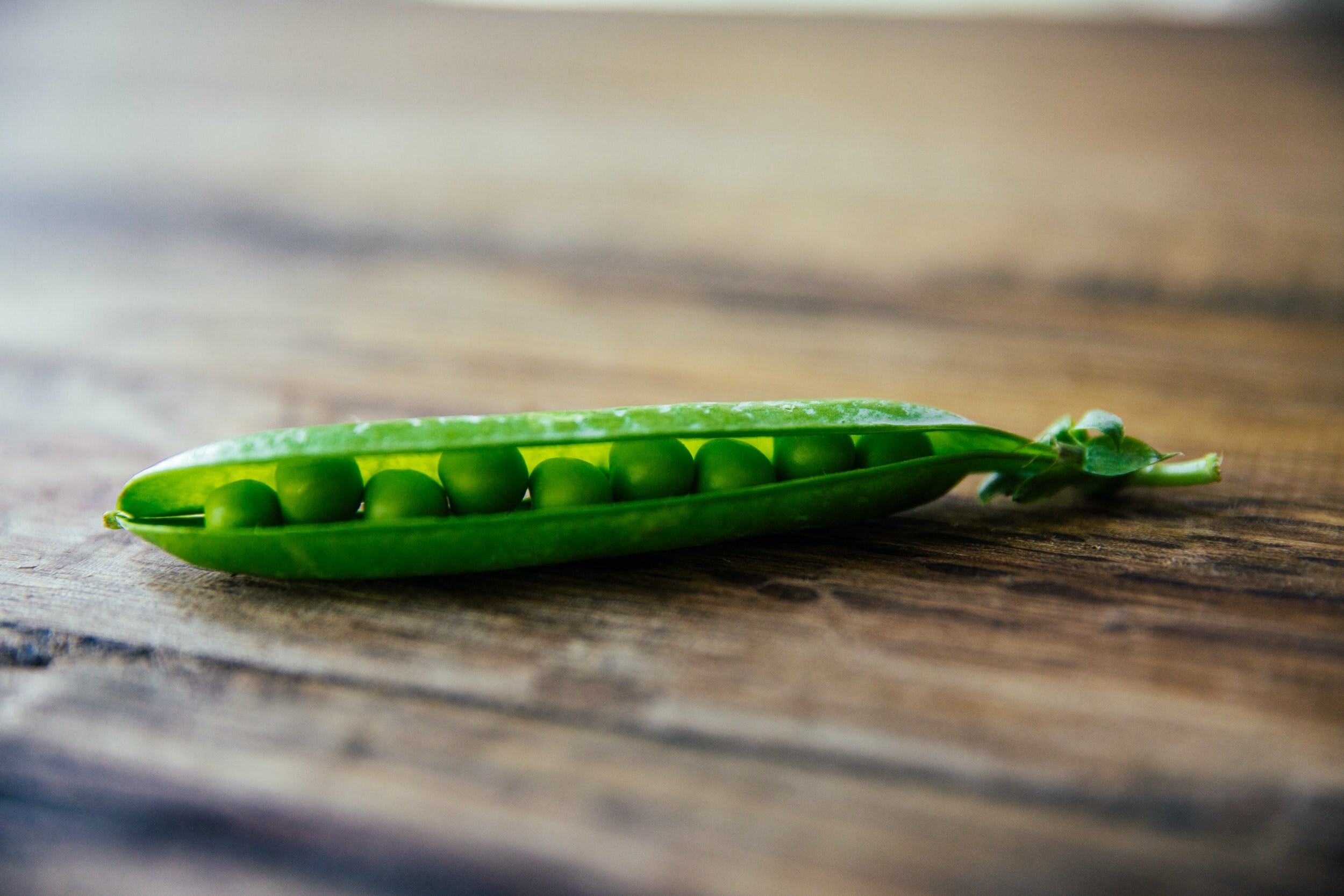Energetics of Green Peas: Prehistoric Food
While there are many varieties of peas, today we will be discussing green peas, also known as English peas or garden peas. Green peas can be eaten raw or cooked. When cooked, their taste becomes sweeter.
The cultivation of peas dates back thousands of years, and many historians consider them to be one of the first crops grown by humans. They are believed to be native to central Asia and the Middle East. Historically, they have been consumed dry and did not become popular in their fresh form until the 16th century when cultivation techniques changed.
Currently, Canada is the largest producer of peas. Not far behind are France, China, Russia, and India. India is also the world’s largest importer of peas, due to its prevalence in many traditional Indian dishes, such as dahl.
Varieties
Peas are a member of the legume family. Legumes grow fruit in the shape of a pod that has small fleshy seeds enclosed called beans. Peas are one of a few legumes that are sold as fresh produce, as most legumes are found in the dry goods section of your local grocery store. Peas are found both fresh and frozen, although frozen peas tend to be sweeter, as they are frozen at the peak of their freshness! Caution with frozen peas, as they tend to contain high levels of sodium, even if they are labeled “low sodium”.
Green peas come in two main varieties, fresh shelled or edible pods. Garden peas must be shelled prior to eating, which makes them in low demand at the store. They might come with a few extra steps to prepare, but these peas have a higher nutritional content than the edible pod variety. Our edible pods are Snow peas and Sugar Snap peas. These peas are slightly sweeter than garden peas and tend to be lower in calories.
While peas, in general, are available spring to early winter, Snow peas are found year-round and Sugar Snap peas are available only late spring to early summer.
How to Choose & Store
When selecting Garden peas in the shell, Look for shells that are firm, velvety, and smooth with vibrant medium-green colors. Avoid shells that dull or dark-colored shells, or any that have yellow, white, or gray specks. They should not be puffy or have mildew/mold signs. If you shake the pod and hear rattling sounds, that is an indicator it is likely to contain fewer peas in the pod. For Snow peas, look for pods that are flat with the outline of the peas through the pod. Smaller pods also tend to be sweeter. For Sugar Snap peas, look for peods that are fresh, bright green, firm, and plump. To test for the freshest Snow or Sugar Snap peas, bend the pods and they should snap in half easily.
Proper storage is key to keeping green peas fresh, as they lose both flavor and nutirtional value easily. They should be stored in the fridge in an air-tight container or plastic bag (with all the air squeezed out) in the coldest section. DO NOT wash them prior to refrigeration, as the water will encourage the peas to spoil. Fresh peas stored properly will last for up to 10 days, whereas frozen peas can keep for up to 1 year.
Nutrition
Peas are an excellent source of vitamins A, B1, B2, B3, B6, C, and K. They are also high in fiber, protein, and essential minerals including manganese, folate, and phosphorus, which are essential for the proper metabolism of fats, proteins, and carbs. It doesn’t stop there! Peas are also rich in health-protective carotenoid phytonutrients, including lutein and zeaxanthin, which provide antioxidant protection against oxidative damage to cellular structures that can be caused by free radicals!
To maintain nutritional value as well as flavor, never boil or steam peas. Many of the water-soluble vitamins and phytonutients can be leeched out.
Energetics
Peas are neutral in temperature and have a sweet flavor. They nourish the Spleen and Stomach to promote healthy digestion and reduce vomiting, hiccups, and belching. Peas are also a natural mild diuretic and laxative, so they are great for mild edema and constipation. They also promote cellular energy production, as well as promotes bone, heart, and vision health.
Note: Those who suffer from uric acid-related problems, i.e., gout, kidney stones, and more, should avoid consuming peas and other purine-containing foods.
Split Pea and Barley Soup
Serves 6-8
1/2 cup pearl barley
1 3/4 cups water
1 pound dried green split peas
2 quarts water
2 bay leaves
2 Tbsp low sodium soy sauce, Tamari or Coconut Aminos
1/2 Tbsp dried thyme
2 garlic cloves, minced
1/2 tsp dried sage
1/4 tsp cumin
2 cups diced carrots (3 medium carrots)
3 cups diced onion (1 large onion)
1 1/4 cups diced celery (3 large stalks)
Place barley and 1 3/4 water into a sauce pot and bring to a boil. Turn heat down to low and simmer for 45 minutes, until barley is cooked and water is absorbed.
Meanwhile, in a large soup pot or dutch oven, combine peas, 2 quarts of water, bay leaves, soy sauce or tamari, thyme, garlic, sage, and cumin. Bring to a boil over high heat. Reduce heat to a low, cover, and simmer for 20 minutes, stirring occasionally.
Stir in carrots, onions, and celery. Cover and simmer until vegetables are tender, another 30 minutes. After 30 minutes, check to see if peas are completely soft, if not continue to simmer until they are soft.
Turn heat off. Remove bay leaves and discard. Using a hand-held immersion blender, puree soup, leaving it as chunky you prefer or puree completely. Stir in barley and serve.
Sources
“Favorite Soups: Split Pea and Barley Soup and Some More,” Healthy Girl’s Kitchen. http://healthygirlskitchen.blogspot.com/2012/01/favorite-soups-split-pea-and-barley.html
Mateljan, George. The World’s Healthiest Foods: Essential Guide for the Healthiest Way of Eating. George Mateljan Foundation: Seattle, 2007. Print.
Pitchford, Paul. Healing with Whole Foods: Oriental Traditions and Modern Nutrition. North Atlantic Books: Berkeley, 1993. Print.
“Sweet Peas Vs. English Peas in the Grocery Store,” Livestrong. http://www.livestrong.com/article/535639-sweet-peas-vs-english-peas-in-the-grocery-store/



